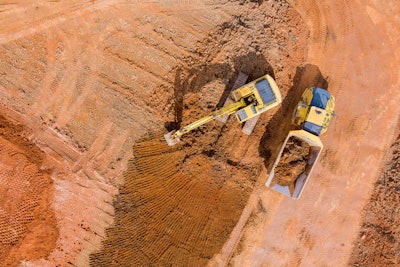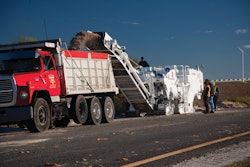
The use of telematics in the construction industry is nothing new. The technology came on to the scene about 20 years ago to enable Global Positioning Systems (GPS) tracking which was critical to understanding where a construction fleet's vehicles and heavy equipment were at any given moment.
While GPS telematics was once seen as the “it” new offering for fleets at the turn of the 21st century, the fleet industry – specifically the construction fleet industry – has advanced in ways we’ve previously would not have imagined. Construction companies of all shapes and sizes have leaned into emerging technologies and have seen the benefits they can bring to their bottom line and the safety of their workforce.
Despite all the new flashy offerings, telematics remains a core component of any construction industry’s technology stack because of the data it can collect from vehicles and heavy equipment. Telematics systems give fleet managers an inside look at the utilization, health, safety, and efficiency of their fleet. But many in the construction industry are just scratching the surface of what is possible with telematics data.
As we continue to embrace a more digitally advanced world, now is the time to take a closer look at the lesser-known applications of telematics and Internet of Things (IoT) for fleets to save time, gain better insights, and drive profitability. Unified data provides insights that help fleet managers control costs, improve safety, and ramp up productivity, enabling businesses to get maximum output from minimum input.
Here are the top areas to explore for immediate advancements with telematics:
Fuel Efficiency
Fuel represents approximately 60% of a fleet’s total operating costs, and it is important to have insights and visibility on how to manage it. From a fuel efficiency perspective, telematics can help to reduce fuel consumption by improving driver productivity.
Specific areas of improvement such as reducing vehicle idling time, speeding, unnecessary stop and go patterns, and engine issues can be identified and mitigated at the root of the source. To manage every aspect of fuel usage, organizations need to have fuel cards integrated with their telematics and fuel management solutions. With the right fuel management system, managers can ensure that alerts are triggered when a discrepancy happens as well as be able to monitor fuel spend trends over time.
Switch to Electric Vehicles
One of the key provisions in the Inflation Reduction Act that President Biden recently signed into law aims to make electric vehicles more mainstream. With this shift in focus towards more sustainable mobility, the adoption of electric vehicles within the trucking and fleet industries will be critical for future success. Today, telematics technology currently supports electric vehicles and the fleet electrification journey through access to multiple data streams to enable critical decision making based on electric vehicle performance.
Because telematics systems can give you a better understanding of how your team uses your assets, you can work towards better efficiency, improved customer service, and even cost savings. This insight enables fleet managers to confidently determine whether there is sufficient range to complete the next sequence of jobs, if an alternative vehicle should be dispatched, and which charge sessions need to be prioritized for safe and productive drives.
Empower Preventive Maintenance
Many fleet managers today are working across separate and disjointed maintenance platforms with little to no automation between failed inspections, mileage and DTC maintenance planning. Mixed fleet operations in construction are tasked with maintaining a wide variety of vehicles and heavy equipment simultaneously which can be a logistics headache as fleet managers try to stick to tight timetables and budgets. This is where the critical role of preventative maintenance comes into play, to expand the lifespan of commercial fleet vehicles.
In order to prevent small issues from snowballing, you need to keep an eye on critical vehicle functions and safety features daily. This is done through a combination of telematics data, daily inspections, and back-office tracking systems. With these tools integrated in a maintenance program, issues are caught and fixed in minutes, making telematics software an increasingly necessary component of a preventative fleet maintenance strategy. Since the device is connected to the vehicle’s computer system, it is easier to align various service checks that should be done periodically.
Better Aid Equipment Rentals
Advanced telematics can directly help rental companies, where protecting equipment and vehicles is of the upmost importance. Through leveraging telematics, access to accurate machine data can help to determine fleet utilization to identify inefficiencies.
For example, telematics software can track habits on seatbelt usage, harsh braking, open doors, and engine diagnostics through information transmitted to the cloud through a cellular network. Within seconds, fleet analysts can then keep track of the drivers’ behaviors and the vehicle’s performance. According to a recent IntelliShift report 90 percent of respondents shared that telematics platforms have allowed them to focus their time on other tasks to improve the company’s bottom line.
There is no way around it—the benefits of telematics solutions are impactful for fleet management. Companies that do not learn to embrace these advances may find themselves struggling to keep pace with more technically advanced competitors that are on board with modernizing and optimizing their operations to fit into today’s connected IoT. By effectively embracing modern technologies like telematics in ways beyond their widely known use-cases, forward-thinking companies can stay one step ahead.



















